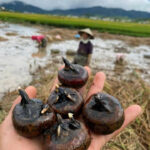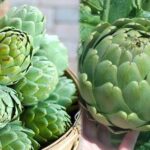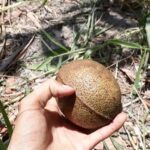The elephant foot yam is a versatile plant, with its leaves, stems, and tubers all being utilized. Particularly, the tubers are a popular ingredient in dishes across the three regions of Vietnam.
Due to its economic value, the elephant foot yam is now cultivated in certain localities such as Hue, Hai Lang (Quang Tri), and Tra Cu (Tra Vinh) for tuber harvesting.
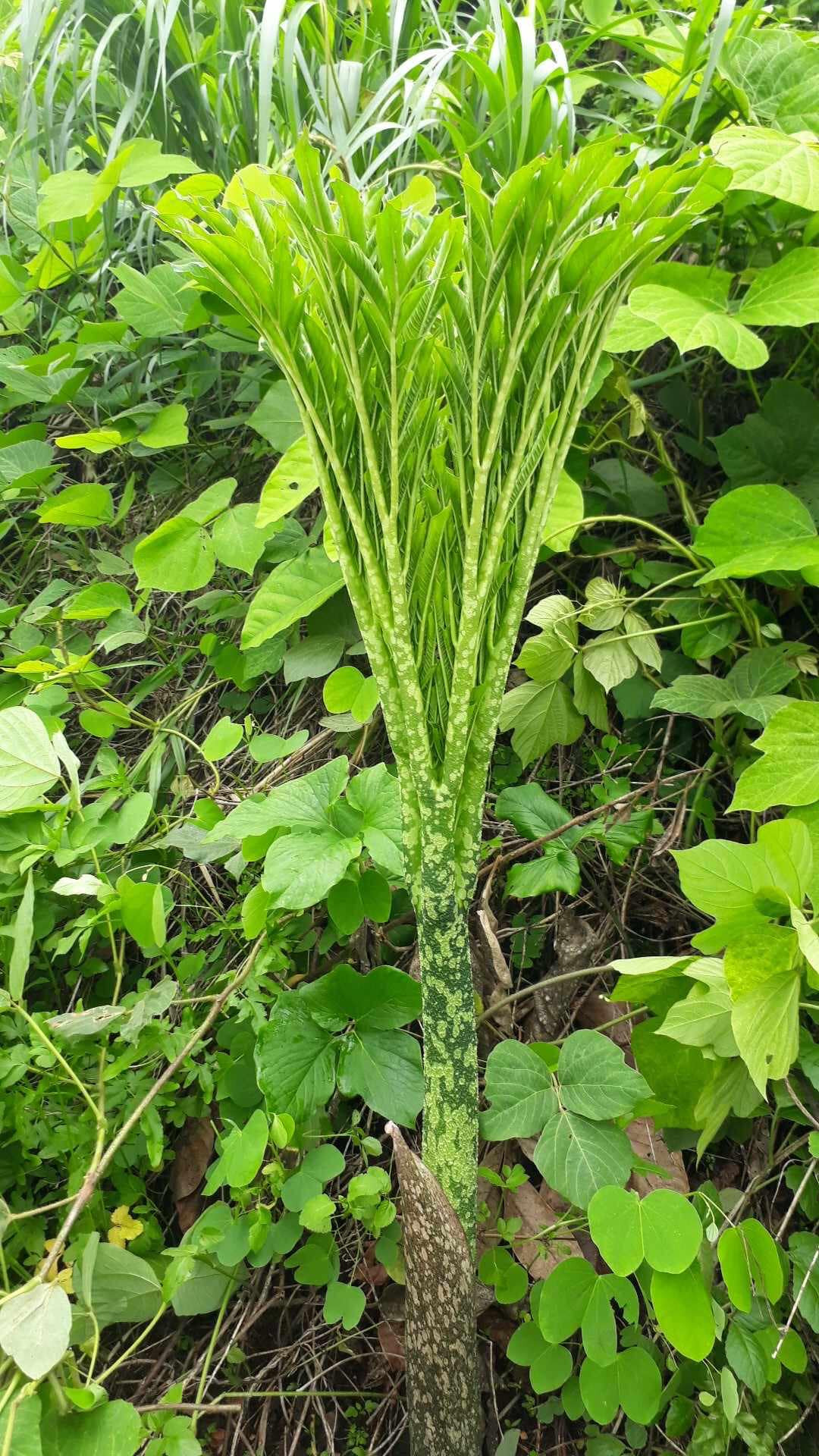
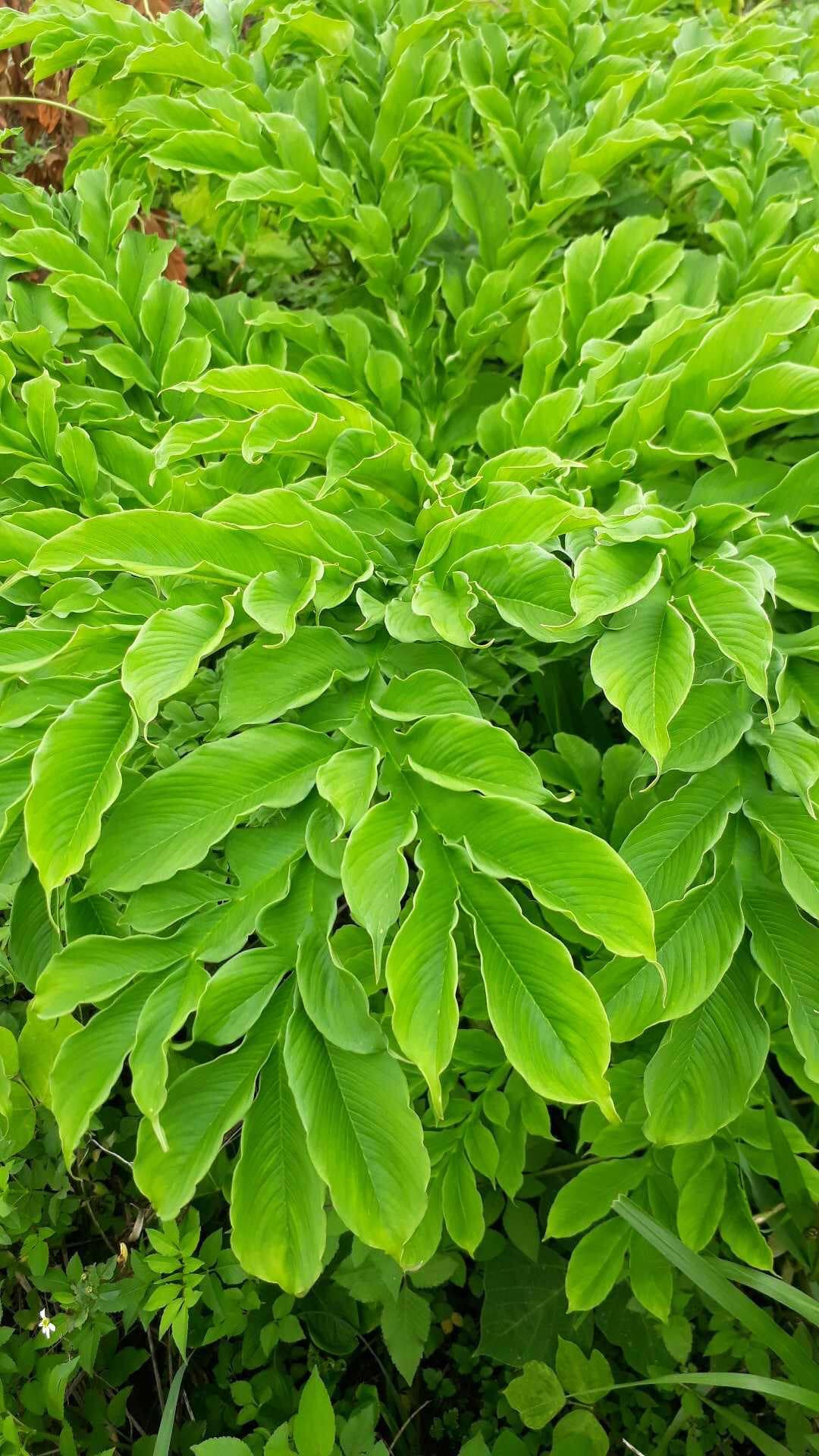
According to the book “Vietnamese Medicinal Plants and Herbs” by Professor Dr. Do Tat Loi, the elephant foot yam grows wild in humid places. This perennial plant has large tubers that cause a slight itching sensation when consumed. Photo by Phi Xuan Thuong
Mr. Le Thang, a resident of Hai Lang, Quang Tri, shared that the tubers are usually harvested from September to November, but the timing may vary depending on the location and climatic and soil conditions.
“To determine the right time for harvesting, locals observe the leaves of the plant. When most of the leaves turn yellow, it indicates that the tubers are ready to be dug up. The tubers harvested before the plant gets too old tend to be softer and cause less itching when eaten,” he added.
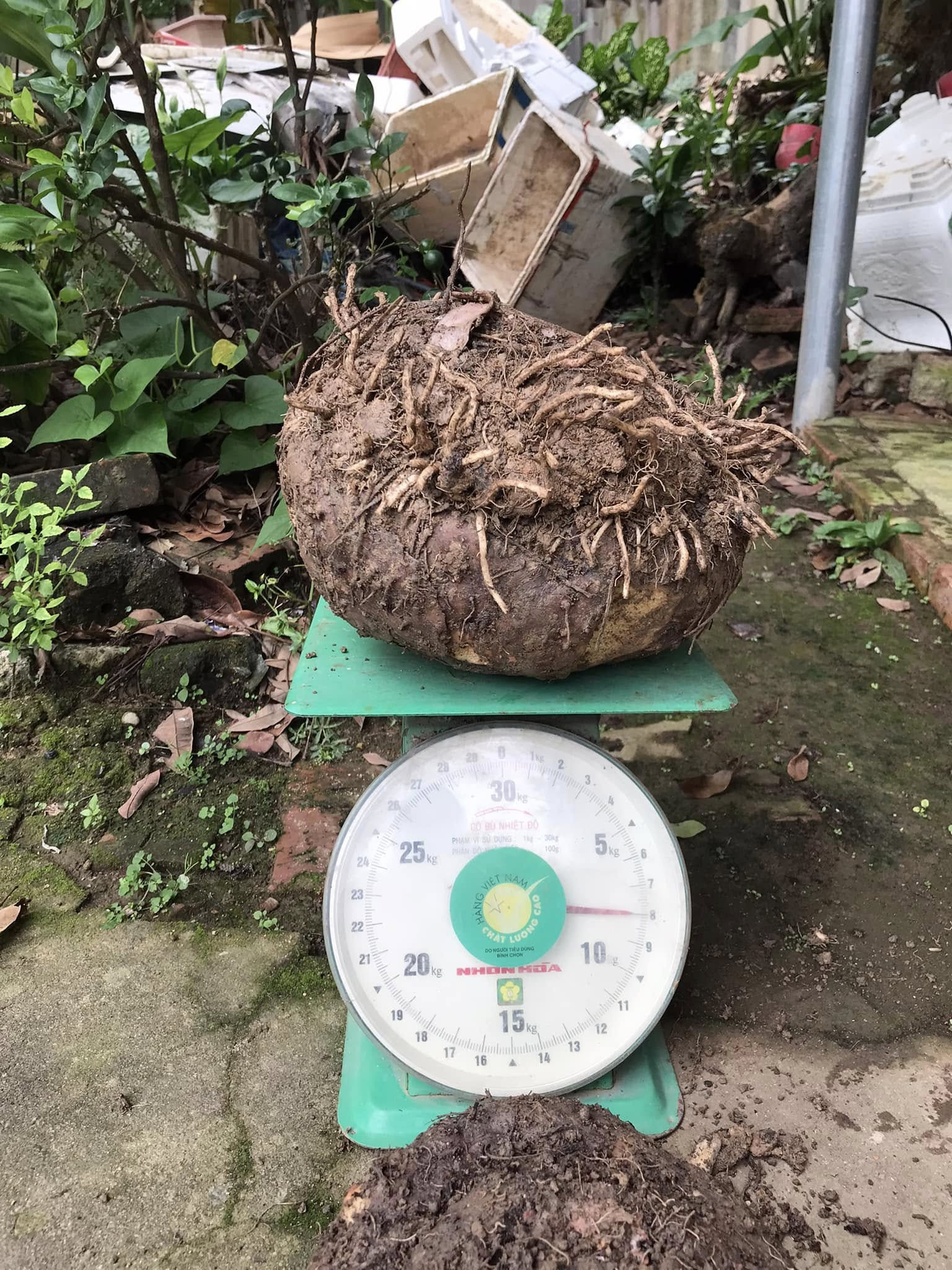
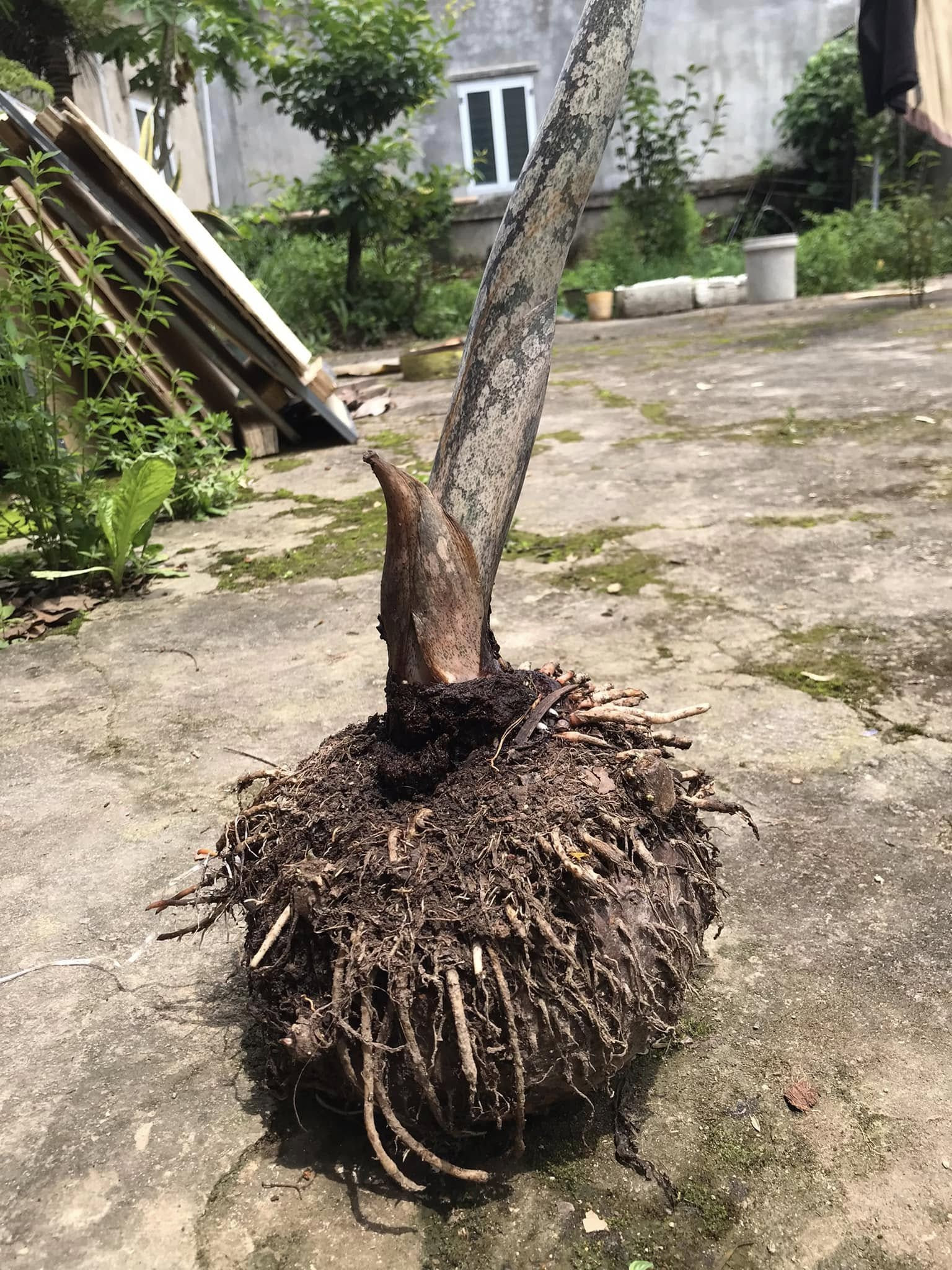
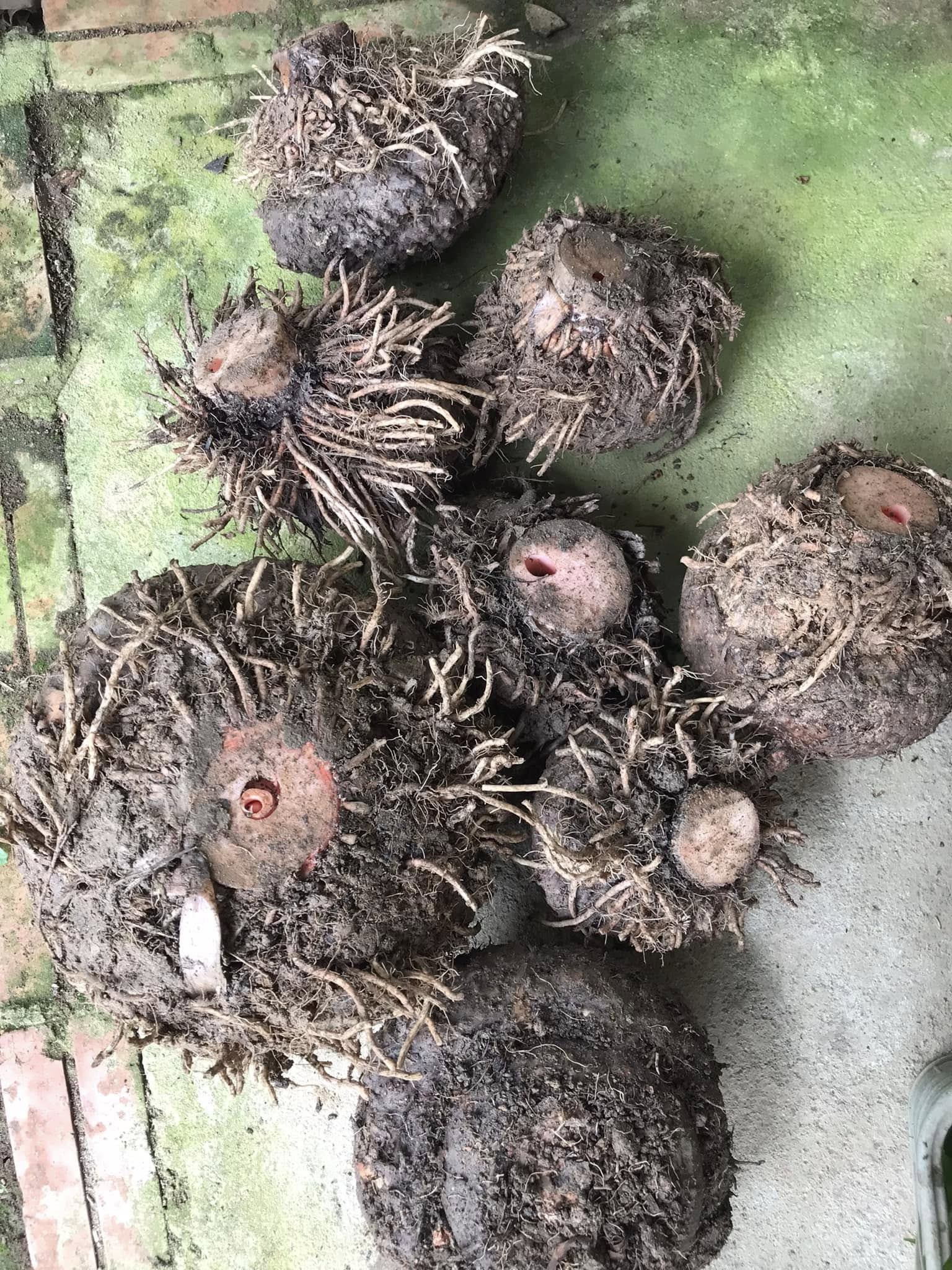
The elephant foot yam tubers resemble taro in appearance, with numerous roots and a rough, bumpy skin. They typically weigh between 2-3 kg. Photo by Phi Xuan Thuong
Based on Mr. Thang’s experience, it is advisable to harvest the tubers on a dry, rain-free day. During the digging process, care should be taken to avoid damaging the tubers.
Any tubers that are scraped, cut, or crushed during harvesting must be set aside and given extra attention during storage to prevent infection and rotting.
After extraction, the tubers are partially cleaned of soil and roots, and the outer skin is peeled off to reveal the yellowish flesh. If not used immediately, they are kept in a dry place for extended preservation.
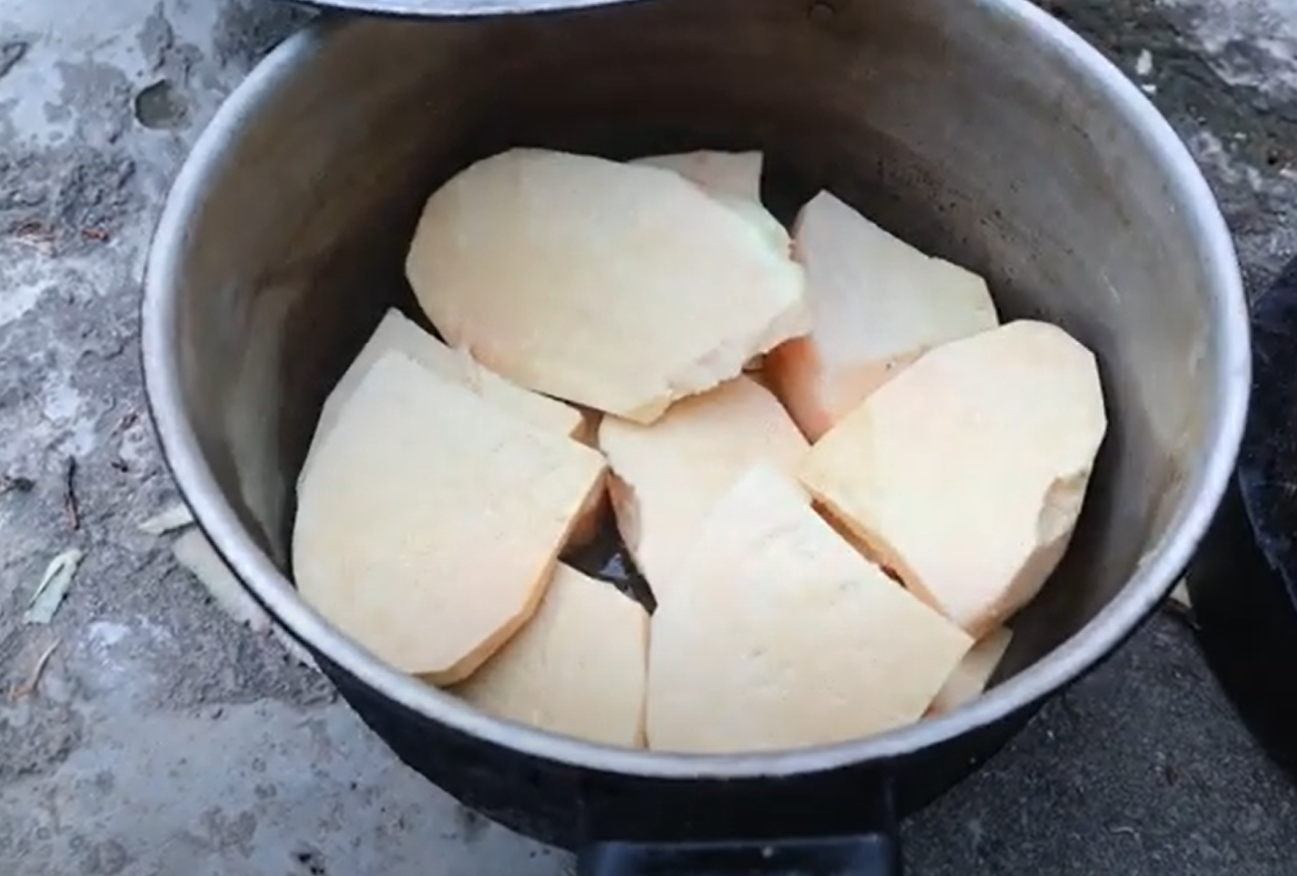
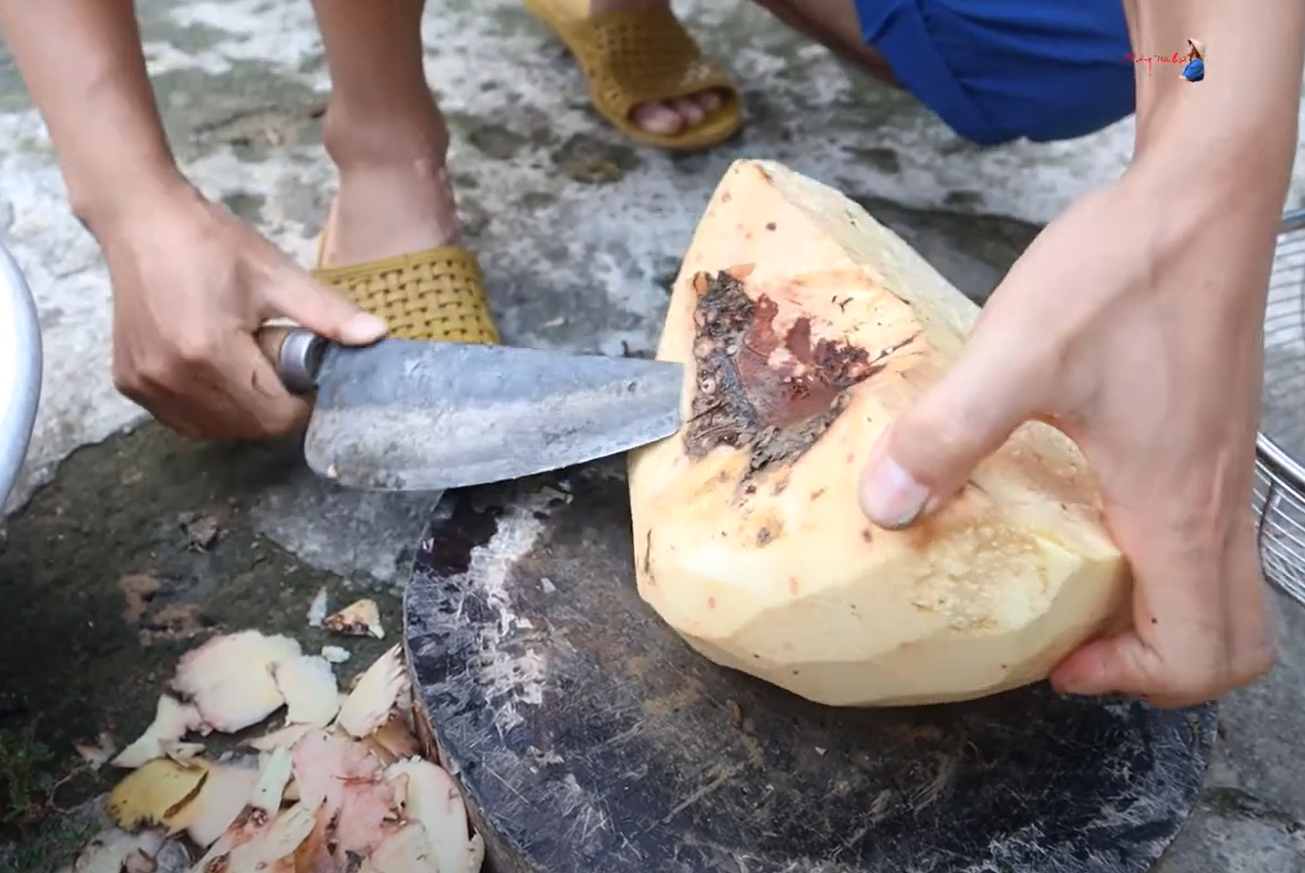
The inner flesh of the elephant foot yam tubers is yellowish, and proper preparation methods ensure that the itching sensation is eliminated. Photo by Trai Ha Bac
Depending on their needs, local farmers may slice and sun-dry (or dehydrate) the tubers to grind them into flour or process them fresh into various dishes such as cakes, tofu, and noodles…
“The flour made from elephant foot yam is fine and similar to cassava flour but has a higher starch content. It is commonly used for making desserts, cakes, noodles, and vermicelli… Products made from elephant foot yam are well-liked by many consumers,” Mr. Thang shared.
To prepare the tubers for cooking, they are first cleaned, peeled, and then soaked in rice water or a solution of salt and alum to remove any itching sensation. After soaking for about 1-2 hours, the tubers are rinsed with clean water and then used in various dishes.
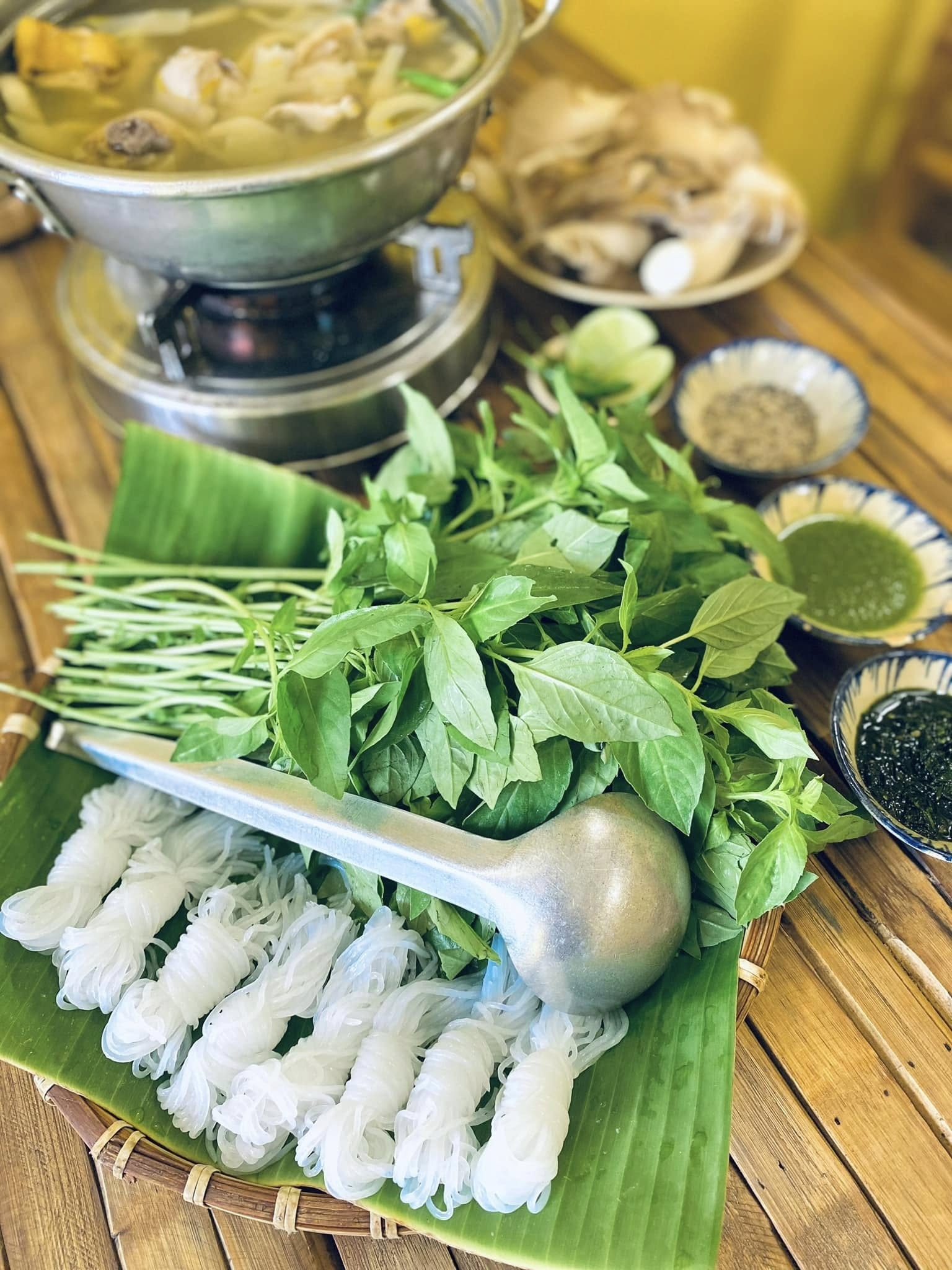
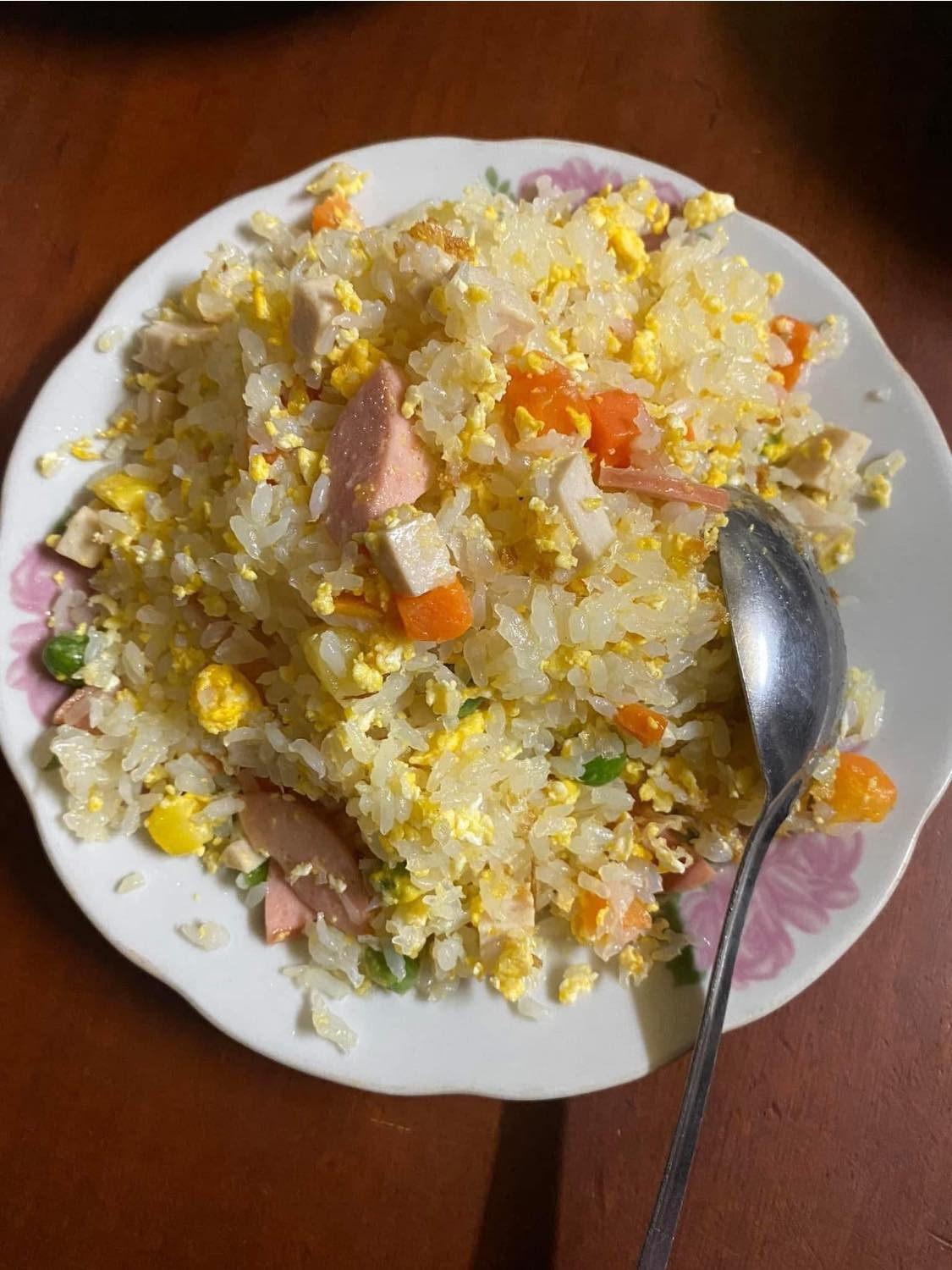
Dishes made from elephant foot yam: Noodles (left) and rice (right). Photos by Andy Mai and Pham Hang
The simplest dish is boiled elephant foot yam, which is easy to prepare and retains the natural softness and fluffiness of the tuber. After cleaning, the tubers are boiled for 20-30 minutes to eliminate any itching sensation. A pinch of salt can be added during boiling to enhance the flavor.
For a more elaborate dish, the tubers are used to make cakes. Fresh tubers are blended with a small amount of water to create a thick, creamy mixture, which is then steamed for half an hour. Alternatively, some people prefer to boil the tubers first, add seasonings, and wait for the mixture to cool and set like jelly before steaming.
The cakes made from elephant foot yam are known for their refreshing taste and soft, moist texture, resembling agar agar jelly.
In addition to boiling and making cakes, the tubers can also be cooked, coated in batter, and deep-fried to create a unique crispy treat.
“Elephant foot yam has a neutral taste and aroma, so people often dip it in salt or sugar according to their preference. This type of tuber is sticky, fluffy, and high in starch, making it quite filling,” added Mr. Thang.
According to Professor Dr. Do Tat Loi’s book, the elephant foot yam contains toxins, but cooking it with lime helps reduce or eliminate these toxins. Fresh tubers can be crushed and applied to treat boils, itching, or snakebites.
Not only the tubers but also the elephant foot yam plant has been utilized in traditional medicine for a long time and is documented in valuable medical literature such as the
The Midnight Harvest: A Delicate Delicacy Illuminated.
After the sun sets, the locals in the western provinces of Vietnam embark on a unique nocturnal endeavor. They gather in groups and venture out into the night to forage for a delicacy known as “mushroom termite.” These prized fungi, sprouting from termite mounds, are sought-after ingredients for upscale restaurants and gourmet chefs. The locals’ nocturnal expeditions are not merely recreational; they are a means to earn a substantial income by supplying this exotic ingredient to discerning chefs and gourmet enthusiasts.
The Underground Delicacy: A Surprise Package of Flavor and Health.
The humble tuber, devoid of any prominent aroma, has captivated the hearts (and taste buds) of many. With its unique flavor, satisfying texture, and remarkable ability to satiate hunger, the nưa root vegetable is emerging as a culinary sensation across Vietnam, from the mountainous regions of the Northwest to the provinces of the Central and Southern regions. This unassuming root vegetable is poised to become a culinary staple, seamlessly blending traditional flavors with modern culinary innovation.
The World’s Fiber-Richest Vegetable, Recognized by the US: Abundant in Vietnam, Yet Underappreciated.
“The humble beetroot is a powerhouse of nutrients and is touted as the world’s richest source of nitrate. This vibrant vegetable is widely cultivated and consumed in Vietnam, with over a thousand varieties grown across the country. From vibrant purple roots to vibrant green leaves, beetroots are a versatile ingredient in the kitchen and a nutritional powerhouse. Read on as we uncover the secrets of this superfood and explore why it’s a staple in Vietnamese cuisine and traditional medicine.”



























